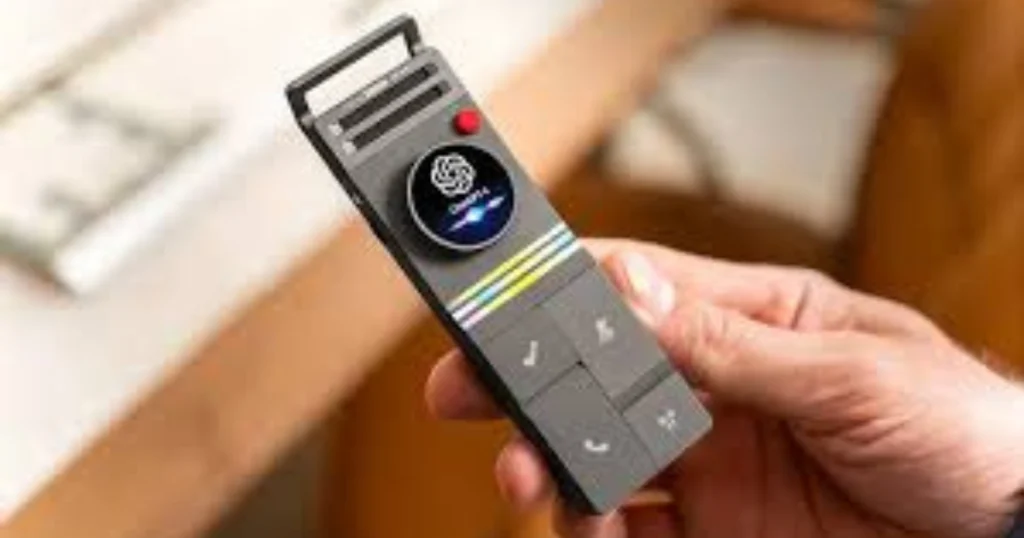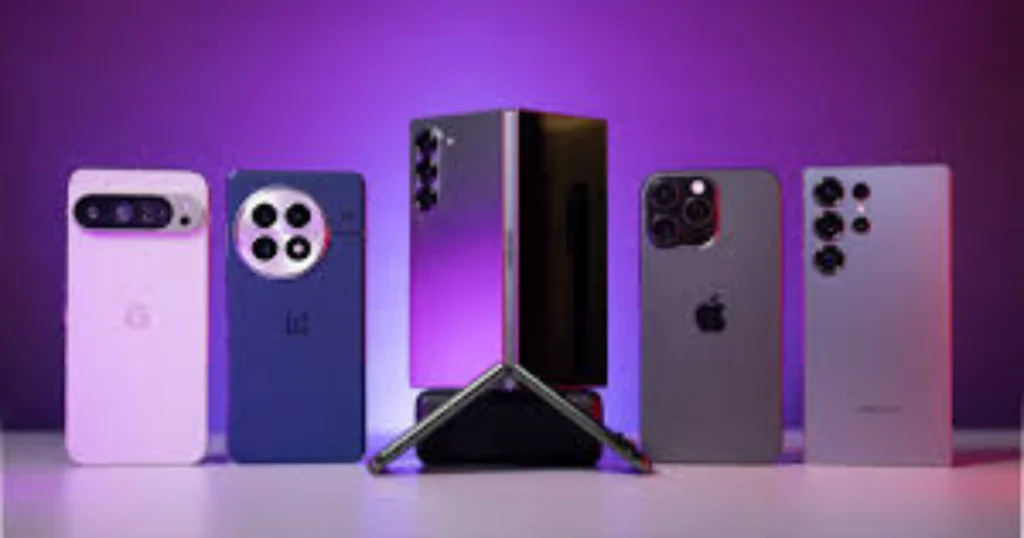The consumer electronics industry is evolving at a breakneck pace, driven by innovation and changing user needs. In 2025, electronics are no longer just tools; they are smart companions that anticipate, assist, and enhance everyday life. From smarter gadgets powered by artificial intelligence to eco-friendly devices designed with sustainability in mind, this year is shaping up to be a landmark for consumer electronics. Let’s dive into the top electronics trends transforming the market today and see what’s driving this exciting evolution.
The Surge of Smart Electronics 🧠
Smart electronics remain at the forefront of consumer technology. Devices equipped with artificial intelligence (AI) and machine learning are making electronics more intuitive and user-friendly. The year 2025 sees electronics that not only respond to voice commands but also proactively learn user habits and preferences to deliver personalized experiences.
Smart home electronics, such as thermostats, lighting systems, and security cameras, now communicate seamlessly with each other. These interconnected electronics optimize energy use, enhance security, and improve convenience — all controlled from your smartphone or voice assistant.
Wearable electronics have also taken a leap forward. Smartwatches and fitness trackers can monitor your health metrics more accurately and offer real-time coaching. Thanks to AI integration, these electronics adjust recommendations dynamically, providing a truly personalized wellness experience.
Sustainability in Electronics: The Green Revolution 🌿
As environmental awareness rises, the demand for sustainable electronics grows stronger. Manufacturers are responding by designing products with eco-friendly materials and energy-efficient technology. In 2025, sustainability is not just a trend but a core principle shaping the development of consumer electronics.
Electronics are becoming more modular, allowing users to easily repair or upgrade parts rather than replace entire devices. This modularity significantly reduces electronic waste — a major global concern. Moreover, many electronics now meet strict energy consumption standards, consuming less power without sacrificing performance.
Companies also focus on reducing carbon footprints by optimizing supply chains and adopting circular economy models where electronics are refurbished, recycled, or reused.
Next-Level Connectivity: 5G and Beyond 📶
Connectivity is the backbone of modern electronics, and 5G networks are revolutionizing this aspect. In 2025, 5G-enabled electronics dominate the landscape, offering blazing-fast internet speeds, ultra-low latency, and enhanced reliability.
This advancement unlocks new possibilities for consumer electronics. Streaming high-definition video, engaging in real-time multiplayer gaming, and operating smart home devices simultaneously without lag are now commonplace.
The integration of 5G into electronics also supercharges the Internet of Things (IoT), connecting billions of devices for smarter homes and cities. This connectivity enhances convenience and efficiency in everyday life while laying the foundation for futuristic technologies like autonomous vehicles and remote healthcare.
Foldable and Flexible Electronics: The Future of Portability 📱
Foldable and flexible electronics continue to gain momentum in 2025. What began as a novelty is now a practical innovation changing how we interact with devices.
Smartphones, tablets, and even laptops with foldable displays allow users to enjoy larger screens in compact, pocket-sized forms. These electronics enable multitasking and immersive media consumption without sacrificing portability.
Beyond displays, flexible electronics extend to wearable tech embedded in clothing or accessories. This flexibility offers new form factors that adapt to users’ lifestyles, making technology less intrusive and more integrated into daily life.
Immersive Audio and Visual Electronics 🎧📺
High-quality audio and visual electronics remain crucial for consumers who demand the best entertainment experiences. In 2025, advancements in display technology, like 8K resolution, OLED, and MicroLED panels, deliver stunning visuals with vibrant colors and sharp contrasts.
Smart electronics now optimize audiovisual settings automatically by analyzing ambient lighting and sound conditions. This intelligent adjustment ensures crystal-clear picture quality and immersive sound in any environment.
Wireless earbuds and headphones have also evolved, featuring improved active noise cancellation, longer battery life, and seamless connectivity. These audio electronics cater to mobile lifestyles, offering premium sound quality on the move.
Enhanced Security Features in Electronics 🔒
With the rise of connected electronics, security becomes paramount. In 2025, electronics integrate advanced biometric authentication such as facial recognition, fingerprint sensors, and even voice identification to protect user data.
Manufacturers focus on embedding security directly into hardware and software, making devices resilient to cyber threats. Firmware updates now include enhanced encryption and vulnerability patches delivered seamlessly to consumer electronics.
Users benefit from these innovations by enjoying privacy and safety without sacrificing usability. Secure electronics build trust and enable confident adoption of new technologies in homes and workplaces.
Wearable Electronics and Health Tech Innovation ⌚
The health tech sector continues to thrive, with wearable electronics playing a major role. Smartwatches, fitness bands, and health monitors go beyond tracking steps, measuring heart rates, or counting calories. In 2025, these devices provide detailed health insights, such as blood oxygen levels, ECG readings, and even glucose monitoring.
Emerging wearable electronics incorporate AI to analyze health data and provide personalized advice, alerting users about potential issues before symptoms appear. The integration of wearable tech with telemedicine platforms supports remote health monitoring, making healthcare more accessible and proactive.
Additionally, smart clothing with embedded sensors is gaining traction, offering continuous biometric data collection in a comfortable and non-intrusive way.
Virtual and Augmented Reality Electronics 🕶️
Virtual reality (VR) and augmented reality (AR) electronics are no longer niche products limited to gamers. In 2025, these technologies permeate diverse fields including education, retail, real estate, and social media.
Electronics equipped with AR overlay digital content onto the real world, enhancing navigation, shopping, and interactive learning. VR headsets offer immersive environments for work collaboration, training simulations, and entertainment.
Recent improvements in VR/AR electronics focus on reducing headset size and weight while improving resolution and motion tracking. These advances make VR and AR more comfortable and accessible, paving the way for widespread adoption.
Integration and AI: The Heart of Future Electronics 🤖
Looking forward, the biggest electronics trend is seamless integration powered by AI. Devices communicate effortlessly across ecosystems to anticipate user needs and automate daily tasks.
In 2025, electronics become more intuitive through AI assistants embedded deeply in hardware and software. From smart home hubs controlling multiple devices to AI-enhanced cameras optimizing photos in real-time, electronics are smarter, faster, and more personalized.
This integration fosters an environment where electronics do not operate in isolation but work together to improve convenience, productivity, and sustainability.
Conclusion
The consumer electronics landscape in 2025 is vibrant and transformative. Smart electronics, sustainability, faster connectivity, and immersive experiences are the cornerstones shaping this exciting era. Whether it’s through foldable devices, health-focused wearables, or AI-driven ecosystems, electronics today prioritize user experience and environmental responsibility.
As these trends continue to evolve, consumers can expect more powerful, efficient, and intelligent electronics that seamlessly integrate into every aspect of life. Staying informed about these developments empowers you to embrace the future of technology confidently.


